In a world of economic uncertainty, Ho Chi Minh City (HCMC) defies the current gloom. As multi-national investment and business pours in, the former Saigon and three centuries old city emerges as one of Asia’s most dynamic business destinations.
“One only has to look at the legions of ‘suits’ marching through its doors to understand that Vietnam has little to do with the legacy of war and everything to do with the promise of prosperity,” says John Gardner, general manager of the Caravelle Hotel.
“In the early 1990s, the Caravelle’s owners knew it was only a matter of time before Ho Chi Minh City would emerge as one of Southeast Asia’s ‘little dragon’ economies,” he says.
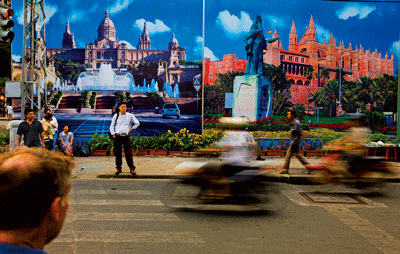
Free of historical and economic constraints, increasingly cosmopolitan HCMC has wasted no time post-1980’s Do Moi (the policy of opening up the economy) catapulting itself into the 21st century. According to a 2009 PricewaterhouseCoopers report, it is now the second fastest growing city in the developing world.
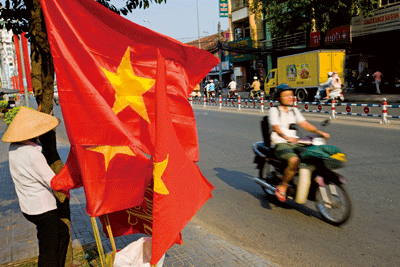
Vietnam’s largest metropolis frantically moves ahead, with its all-out homage to consumerism and free market economy at odds with the communist-ruled, socialist republic address.
The 1990s Asian Financial Crisis and en masse foreign business withdrawal, SARS, Avian Flu – even the current global economic crisis – now seem like old news.
With a raw energy defying the tropical heat and an air of confidence that almost could be cut with a US dollar note, HCMC is undergoing an economic renaissance of feverish commercial enterprise and development.
No need to study fiscal reports for confirmation. If anything symbolises the city’s dizzy metamorphosis, it’s the shifting skyline. In the last decade its low-rise downtown cityscape – the central District 1, the French Quarter and beyond – has become punctuated with glass and steel high-rises housing international hotels, corporate offices and
deluxe apartments.
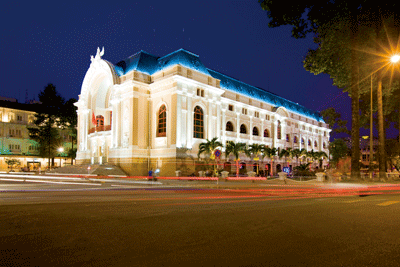
Accelerating in the last couple of years, high-rise construction work is omnipresent, not just downtown but in emerging “project areas”, including Districts 2 and 7, and Thu Thiem, an undeveloped area across the Saigon River from downtown. These new city suburbs were primarily established to house and service the increasing influx of expatriates as well as the emerging middle-class.
Several broader forces have helped: Vietnam’s 2007 entry into the World Trade Organisation provided an anchor to the global market and reinforced the domestic economic reform process. The government has made an all-out effort to open the market for private and foreign investment, resulting in progressive unified investment and enterprise laws.
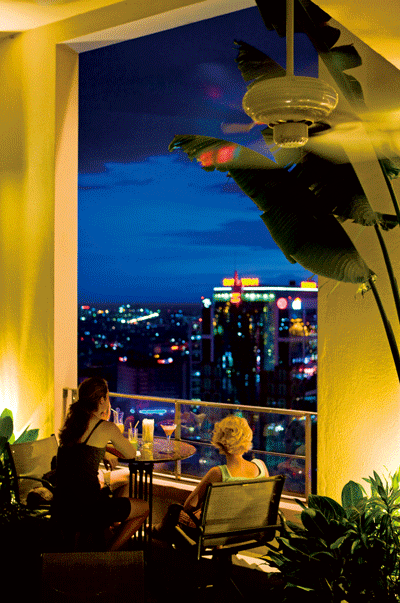
Everyone, it seems, is in on the action. The Saigonese have long been known for savvy business acumen. Saigon was a major port under French Indochina, and rubbed shoulders with the consumer-oriented Americans during the Vietnam War. And the business-oriented Chinese community in the city’s thriving Chinatown has exerted a
significant influence.
Perhaps it’s just “business as usual” – except for the ubitiquous mobile phones and laptops used by locals to seal the deal.
Overseas Vietnamese (many fleeing on boats in the 1970s and 1980s) are steadily returning home to invest, being one of the biggest boosts to the city’s economy. International corporations, investors and entrepreneurs are lured by relatively low operational and resource costs, a young, literate workforce and political stability. Additionally, HCMC is Vietnam’s main commercial and economic powerhouse, as well as its scientific, technological and industrial centre. Combined with neighbouring Dong Nai, Binh Duong and Ba Ria-Vung Tau provinces, HCMC’s “Southern Economic Zone” accounts for over 40 percent of Vietnam’s GDP. Its concentration of oil, electronics and chemical industries attracts further foreign investors.
With a consumer-hungry and predominately youthful market (65 percent of Vietnam’s population is under 35), retail offers big opportunities in HCMC. In 2008, Vietnam was listed by AT Kearney Global Retail Development Index as the number one most attractive emerging market destination for retail investors.
Luxury international designer stores like Bvlgari, Gucci and Louis Vuitton have all opened glitzy flagships, capitalising on astonishing Saigonese brand awareness. Chic fashion and lifestyle stores, established by local and resident-international designers, are also flourishing.
“Currently, the vitality and dynamics of HCMC is unrivalled in the world,” says Christina Yu, founder-designer of Vietnam-made accessories label, Ipa-Nima. “HCMC has a huge potential to be the next big hip city in Southeast Asia. That’s why I opened my stores here, regrettably 10 years too late!”
Like offices, retail space supply lags far behind other Asian cities; demand is huge, especially for shopping malls. “The lack of shopping malls in Vietnam is surprising, but for huge shortages there are great returns,” says Tjeert Kwant, chief executive of ECC Invest, currently constructing Vietnam’s biggest mall, in Binh Duong province.
The swelling ranks of nouveau riche and foreign expatriates, tourists and “executive suits” come with disposable incomes and discerning tastes. Thus the city, especially downtown, is home to a new generation of stylish cafés, nightspots and restaurants. International influences and local lifestyle changes have altered the dining landscape, creating an increasingly sophisticated and progressive range of restaurants.
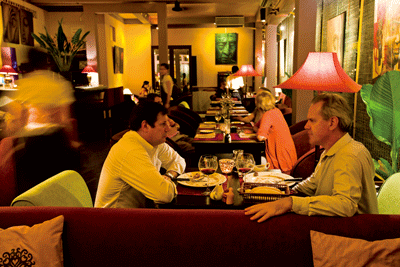
And with so many corporate travellers jetting-in for business, luxury international hotels are thriving, predominately gearing to this niche clientele. “Generally, the corporate market constitutes 70 percent of our business,” says Gardner of the Caravelle.
With no clearly defined central business district, it is basically understood as downtown, but an increasing amount of business transactions take place in outlying districts, where new business facilities such as the exhibition centre, industrial parks and factories have been established. Most business hotels, however, are still dotted on and around Dong Khoi, the downtown’s historic central artery, where many of the city’s main tourist, shopping, corporate and entertainment venues are located.
Invariably, luxury lodgings must keep up with discerning business travellers’ demands. The city’s first business hotel, the Caravelle (www.caravellehotel.com) offered bulletproof glass, Berliet generator and Trane air-conditioners when it opened back in 1959 – pioneering stuff for Saigon. Today, this five-star hotel was one of the first to provide free Wi-Fi internet access and fibre-optic cable technology throughout the hotel.
The Sheraton Saigon Hotel and Towers’ (www.sheraton.com/saigon) ground-breaking 25-storey Grand Tower features cutting-edge technology, personal butler service and exclusive lounge concept, while the Park Hyatt Saigon (www.saigon.park.hyatt.com) has 24-hour butler service on every floor, in-room iPod docking stations and Mercedes-Benz S-Class limousine transfers, according to general manager Michael Golden.
HCMC’s hotels are now getting international recognition. This is remarkable given Vietnam’s comparative inexperience in the field of hospitality.
In the present economic exuberance more upscale hotels are muscling in, like the new InterContinental (see Hotel Check) and ACCOR’s planned Ibis and Novotel brands. “Further potential exists for internationally recognised hotels in HCMC, as demand continues to grow from both the business and leisure segments,” says Patrick Basset, regional vice president, ACCOR, Vietnam.
As any entrepreneur will testify, the door may be open, but the entrance is still beset with obstacles, especially on micro levels.
Some real estate prices have soared to astronomical levels, in some cases rivaling Manhattan or Tokyo, contributing to transient downtown business addresses.
Planning work, complex contracts and red tape can cause so much delay in projects that it discourages some investors. Corruption is still an issue and communications technology lags somewhat behind.
And while these socio-economic changes bring to some Saigonese previously undreamt of opportunities and improved lifestyle, ultimately there’s a price to pay, in the form of an ever-widening gap between the rich and the poor and infrastructure failing to keep pace with the rapid development.
Meanwhile, the absurdly chaotic traffic, fuelled by four million plus motorbikes and imported automobiles, contributes to some of the world’s highest air pollution levels, as confirmed by a UN environmental report in 2007.
Tellingly, the city is morphing into a business rather than tourist destination. Many French colonial buildings and evidence of Saigon’s past are being demolished in the name of “progress,” contributing to the city losing much of its charm – the very element that attracted tourists and investors in the first place.
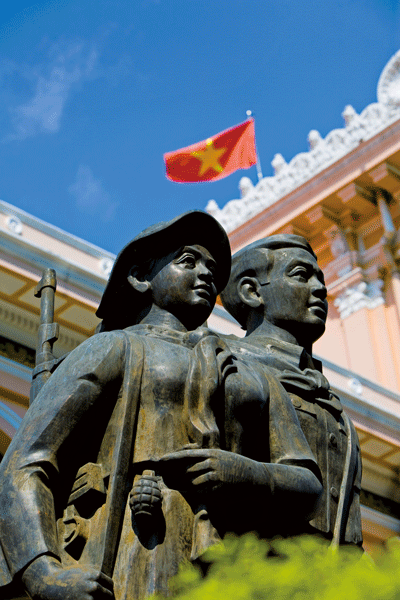
“For historical enthusiasts trying to avoid globalisation, this comes as a negative,” says Rick Mayo-Smith, managing director of Indochina Capital and Indochina Land.
“However, for the Saigonese and investment community that has developed during Vietnam’s transformation, modernisation is a promising sign that there are better things to come.”
DINING OUT
Relatively inexpensive, HCMC’s impressive dining options range from gastronomic fine dining to some of the world’s best street food.
“On recent business trips to HCMC, I’ve been impressed with the numerous quality places to meet and dine for business,” says Vanessa Koo, ACCOR’s regional director of development.
International-style restaurants come clustered in central downtown and offer culinary choices ranging from Indian and French to Pacific Rim and tapas.
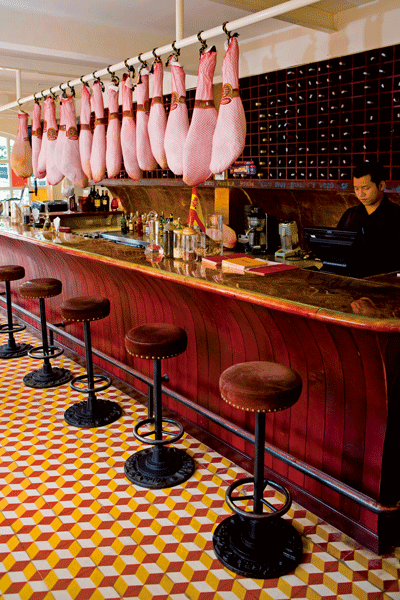
Nods to the executive diner are business set lunches, cigar rooms, the finest wines and premium imports, like Wagyu beef. Authentic Japanese restaurants dominate eastern Le Thanh Ton Street, catering to thousands of Japanese businessmen.
Some of the finest restaurants are found in the city’s five-star hotels, notably Park Hyatt’s Square One and Opera and Legend’s Yoshino. Other gourmet offerings of note are Xu (71-75 Hai Ba Trung Street) and Cepage (22 Le Thanh Ton Street) in District One, La Camargue (191 Hai Ba Trung Street) in District Three and the riverside The Deck (38 Nguyen U Di Street) in District Two.
TIP OFF – SMART TRAVEL INTELLIGENCE
After heavy-duty business meetings, there is plenty to enjoy in Ho Chi Minh City, from champagne soaked Sunday brunches to romantic cafes and shopping in style
Airport Run
HCMC may boast a sparkling new international airport, but the arrivals side of the terminal offers visitors limited facilities and services. In addition, several cowboy taxi companies operate here. Be sure to pre-arrange airport transfers with your hotel. Downtown is approximately a 30-minute drive, but with increasing traffic congestion, allow more journey time, especially during the morning and evening commuter rush hours.
Sunday Brunch
If you’re here at the weekend, don’t miss Sunday brunch, a Saigon ritual of amazingly good value. Most five-star hotels oblige; highly recommended for gourmet buffets with free-flowing sparkling wines are Opera at the Park Hyatt Saigon, Market 39 at the Intercontinental (see Hotel Check) and Restaurant Nineteen at the Caravelle. For sublime dim sum, head to Crystal Jade Palace at the Legend Hotel Saigon.
Get Around
As yet, there’s no mass urban transport system, although an underground metro is in the pipeline. Fortunately, central downtown is relatively small and its cluster of leisure and commerce interests are mostly walkable. Metered taxis are your best bet for getting around the city; Mai Linh / M Taxis (84 8 38383838) and Vinasun (84 8 38272727) are the most reliable. Self-drive is still off-limits for visitors and cars come with a driver: Budget Car & Driver (www.budget.com.vn) is Vietnam’s only international-standard rental company. Alternatively, you can hire a vintage 1954 Citroen from Red Door Deco ([email protected]/84 8 3825 8672) for a classic Saigon spin.
Café Connections
A French legacy, cafés are an inherent part of Saigonese life, serving home-grown coffee. Many cafés now offer free Wi-Fi internet connection, catering to the hordes of local laptop devotees and movers and shakers doing business there. Try premier domestic chain Highlands Coffee (flagship at 75 Nguyen Du Street, D1), or Sheraton’s celebrated Mojo (88 Dong Khoi Street, D1).
HOTEL CHECK
InterContinental Asiana Saigon
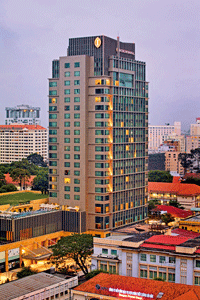
WHAT’S IT LIKE? Ho Chi Minh City’s latest five-star InterContinental Asiana Saigon (IAS), predominately attracts the corporate guest. Opened in September last year and designed with savvy globetrotters in mind, IAS has a functional feel.
Luxurious and über-contemporary, this hotel is environmentally committed and incorporates local touches. It’s part of the Korean-owned Kumho Asiana Plaza complex, also featuring the 31-storey InterContinental Asiana Saigon Residences (IASR), an office block tower, underground parking and a 7,200sqm upscale boutique shopping arcade. IASR is the Intercontinental group’s first residential property in Asia-Pacific and the city’s most exclusive branded rental apartments.
WHERE IS IT? Centrally located in the city’s downtown, IAS is a real business address within walking distance of key commercial and entertainment establishments and tourist spots.
HOW MANY ROOMS? The 21-storey hotel features 305 rooms and suites, with seven categories ranging from Deluxe to Presidential suite (38 to 158sqm). Club Intercontinental floors run from level 16 to level 21.
ROOM FACILITIES The chic guestrooms all have floor-to-ceiling windows with superb city views and abundant natural light, plus deep-soaking bathtubs and walk-in rain showers. The interior design is in contemporary Asian style, while hi-tech amenities feature a 42-inch LCD TV, a DVD player and a home-theater system.
RESTAURANTS AND BARS The signature Yu Chu specialises in Cantonese and Peking cuisine; watch hand-pulled noodles being prepared in the open kitchen. The adjoining Purple Jade lounge-bar comes similarly Chinese-infused; Market 39 is a better-than-average international buffet restaurant (see Tip Off), while The Library offers a refined lobby lounge and afternoon teas with butler-style service. The Italian trattoria-style Basilico is within the IASR block, while restaurants in the adjoining shopping arcade include Hard Rock Café.
BUSINESS FACILITIES Downtown’s largest pillar-less ballroom, fully-serviced business centre and 10 meeting rooms wired with cutting-edge technology are located on the 2nd floor. The 19th floor’s snappy Club IC Lounge offers executive privileges, plus Wi-Fi internet is accessible in public areas.
LEISURE FACILITIES The 3rd floor Health Club comprises a 20m outdoor lap pool and fitness centre with the latest cardio and resistance equipment. The InterContinental’s own-brand day spa is one of the city’s finest and the shopping arcade indulges luxe retail therapy.
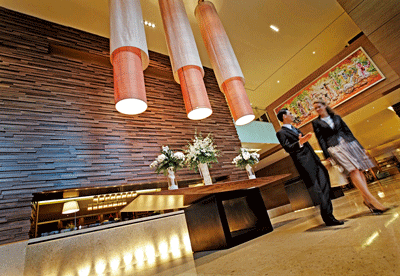
VERDICT Location and deluxe facilities provide convenience, with impeccable service standards – yet competitively priced.
PRICE Deluxe room from US$230.
CONTACT Corner of Hai Ba Trung and Le Duan streets, District One, Ho Chi Minh City; tel 84 8 3520 9999








